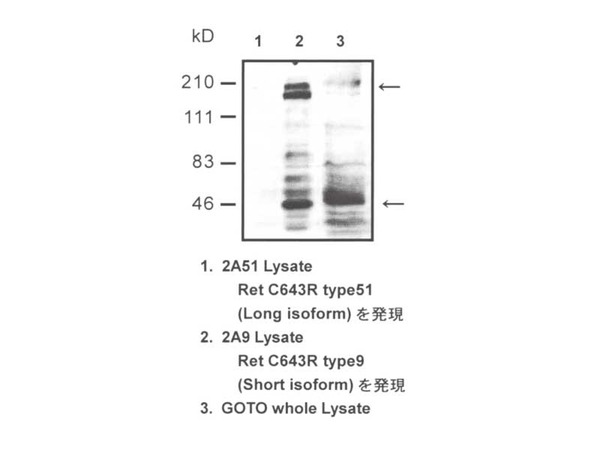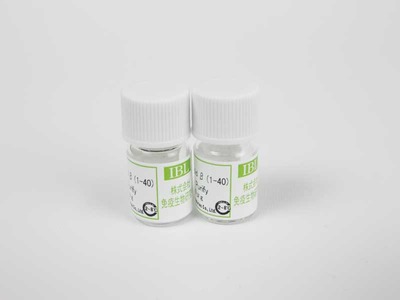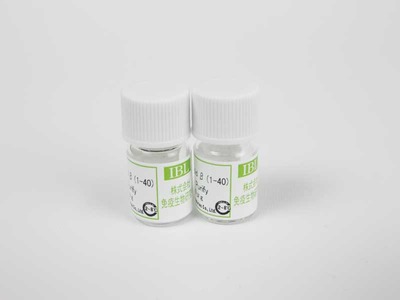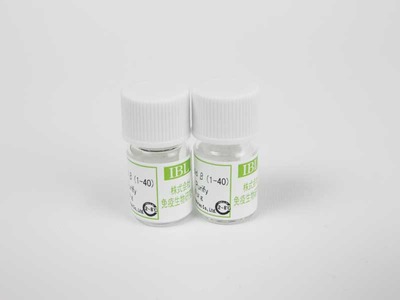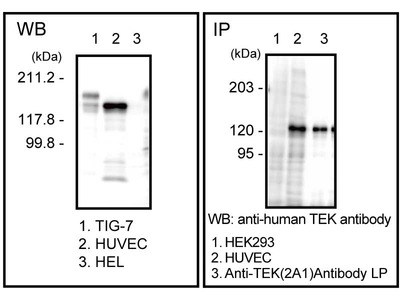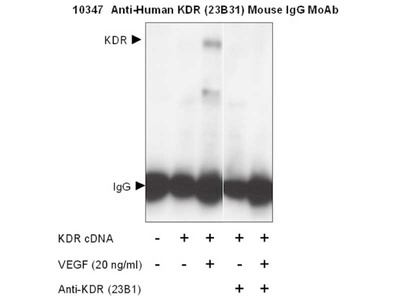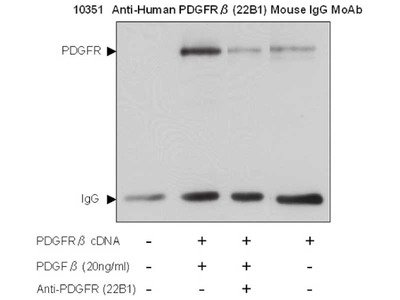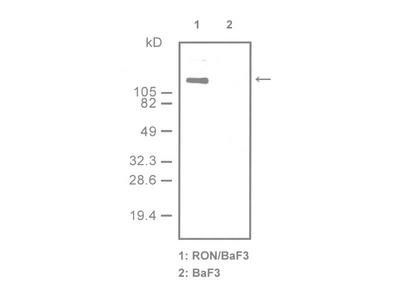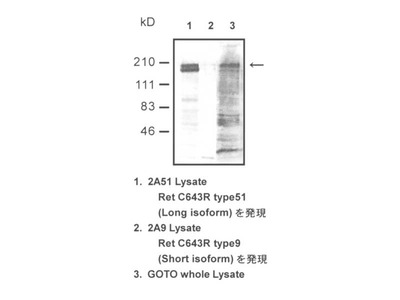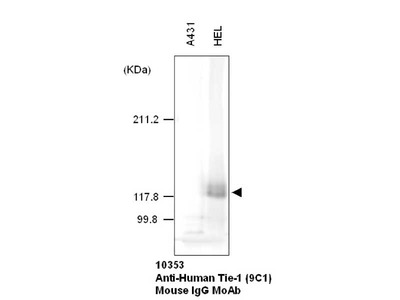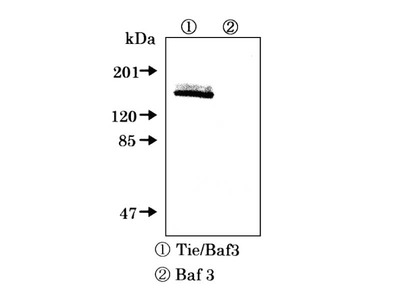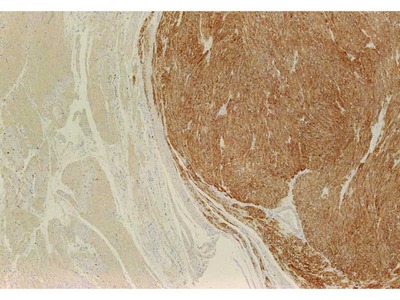- HOME >
- For Researchers >
- Product Search >
- Search Result >
- #18121 Anti-Human c-Ret (R787) Rabbit IgG Affinity Purify
Product Search
#18121 Anti-Human c-Ret (R787) Rabbit IgG Affinity Purify
- Intended Use:
- Research reagents
- Application:
- WB, IHC
- Package Size1:
- 100 μg
- Package Size2:
- 10 μg
- Note on Application Abbreviations
- WB:Western Blotting
- IHC:Immunohistochemistry
※ The product indicated as "Research reagents" in the column Intended Use cannot be used
for diagnostic nor any medical purpose.
※ The datasheet listed on this page is sample only. Please refer to the datasheet
enclosed in the product purchased before use.
Product Overview
Product Overview
| Product Code | 18121 |
|---|---|
| Product Name | Anti-Human c-Ret (R787) Rabbit IgG Affinity Purify |
| Intended Use | Research reagents |
| Application | WB, IHC |
| Species | Human |
| Immunizing antigen | Synthetic peptide of the C terminal part of Human c-Ret sort isoform |
| Purification Method | Purified with antigen peptide |
| Specificity | Cross-reacts with mouse and rat. |
| Package Form | Lyophilized product from PBS containing 1 % BSA and 0.05 % NaN3 |
| Storage Condition | 2 - 8℃ |
| Poisonous and Deleterious Substances | Applicable |
| Cartagena | Not Applicable |
| Package Size 1 | 100 μg |
| Package Size 2 | 10 μg |
| Remarks1 | The commercial use of products without our permission is prohibited. Please make sure to contact us and obtain permission. |
Product Description
Product Description
The ret proto-oncogene products (c-Ret) are expressed as 150kDa and 170kDaglycoproteins in neuroblastoma cells and as 150kDa and 190kDa glycoproteins in leukemia cells. These proteins are produced from a single polypeptide of 120kDa by posttranslational glycosylation. Although expression of the ret proto-oncogene was frequently detected in human tumors such as neuroblastoma, pheochromocytoma and thyroid medullary carcinoma, its physiological function is unknown. It turned out that the extracellular domain of the c-Ret contains a cadherin-related sequence that is
known to be important for Ca2+-dependent homophilic binding of cadherins. The homologous sequence found in the c-Ret consists of about 110 amino acids and is tandemly repeated 3 – 4 times in the extracellular domains of all vertebrate cadherins. The sequence of the c-Ret showed 20-30% identity with the member of the cadherin superfamily in the amino acid level. This suggests that possibility that the c-Ret may function as a cell adhesion molecule like cadherins. This antibody specifically recognizes human c-Ret short isoform (RET9/R787).
known to be important for Ca2+-dependent homophilic binding of cadherins. The homologous sequence found in the c-Ret consists of about 110 amino acids and is tandemly repeated 3 – 4 times in the extracellular domains of all vertebrate cadherins. The sequence of the c-Ret showed 20-30% identity with the member of the cadherin superfamily in the amino acid level. This suggests that possibility that the c-Ret may function as a cell adhesion molecule like cadherins. This antibody specifically recognizes human c-Ret short isoform (RET9/R787).

